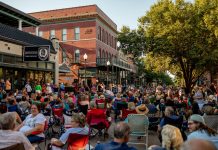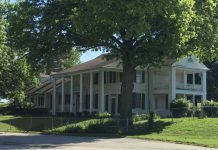The Ville, a North St. Louis neighborhood, happens to be the home of some of the greatest luminaries in history. Chuck Berry, Tina Turner, Dick Gregory, Arthur Ashe and more have all graced the halls of Charles H. Sumner High School, located in the heart of The Ville. Times have changed since the days of their attendance, but some who still call The Ville home continue to work to restore the area back to its rich essence.

The Ville mirrored Black excellence in the early 1930s, and the entire community was rather self-sufficient, allowing its residents to facilitate each of their professional, educational and cultural needs.
The neighborhood once included a number of educational and social service institutions, including Lincoln University Law School, Homer G. Phillips Hospital and Annie Malone Children and Family Services.
An area that previously thrived with resources to help African Americans advance during a racially challenging time is no longer – what happened to The Ville?
Residents of The Ville have said that one of the greatest detriments to the neighborhood was the racial discrimination among housing and community spaces. Racial covenants stopped African Americans from having the opportunity to obtain properties in certain areas of St. Louis. In 1968, the Fair Housing Act made covenants illegal, and led to a large population of Ville-based African Americans relocating to areas that were no longer restricted, especially to St. Louis County.
By 1970, The Ville’s population decreased by 38%; however, the area’s proud residents have put in tremendous effort to restore the neighborhood and its historical institutions back to their original glory.
The redemption of The Ville begins with initiative. Locals like Laura Hughes, CEO of Fleur De Lis Development Corporation, and Aaron Williams, board chairman of 4theVille, have recognized this and began to take action to revitalize The Ville.
Hughes has been proud to call The Ville her home since the days of her childhood spent at St. Matthew’s Simmons Elementary School, where she witnessed a community synonymous with opportunity for Black families.
“The Ville forever shaped history and granted many African American families residing in St. Louis their first opportunity to experience home ownership,” Hughes said about the neighborhood. “In its heyday, The Ville was a well-established, delicately balanced African American community.”
Like Hughes, Williams was able to adhere to the neighborhood’s once-thriving culture and acknowledged it to be an area that displayed sustainable promise for African Americans.
“Its history is the gold standard of Black excellence,” Williams said.
Hughes and Williams hope to replicate this history through developing equity in the area, as well as the camaraderie of its residents.
“I help lead one of the longest-standing community groups, The Ville Collaborative, that uses a collective impact model to strengthen the connections between residents, community organizations, neighborhood associations, businesses and institutions,” Williams said.
Hughes adds the Fleur De Lis Development Corporation aims to restore The Ville to its position of majestic grandeur and grace held in the early 1900s by fully renovating properties throughout the community.



